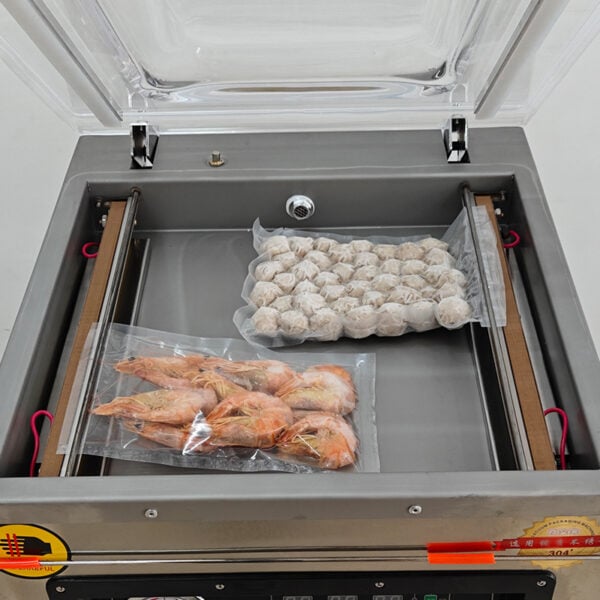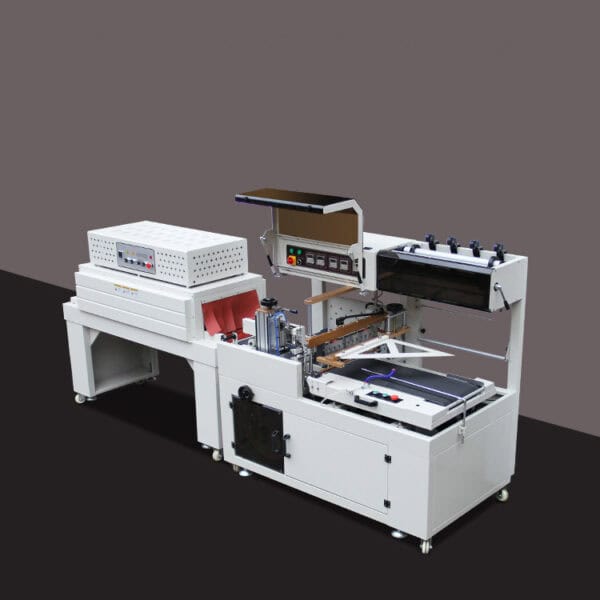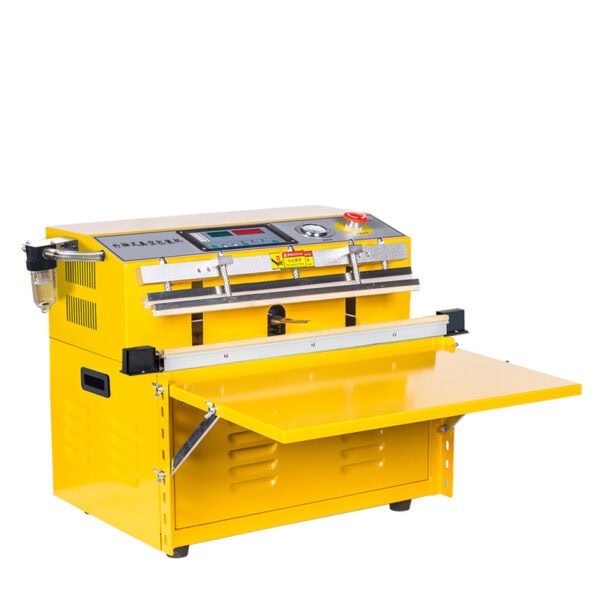Poorly sealed food items are vulnerable to freezer burn and spoilage, costing both time and resources. By selecting the best vacuum packing machine, you ensure freshness, extend food life, and reduce waste.
Choosing the best vacuum packing machine depends on your needs for storage, sealing type, and budget. Key features include compatibility with different bags, machine type (chamber or external), suction power, and customizable settings.
Explore these essential features to find the best vacuum packing machine for your storage needs.

Types of Vacuum Packing Machines
External Vacuum Sealers
External vacuum sealers are versatile and suited for household use. They are compact, easy to store, and usually work well with a range of bag types, including rolls and pre-sized bags. External models are often more budget-friendly and portable, ideal for those who don’t need a heavy-duty machine. A Flat Labeling Machine can be paired with this setup to assist in labeling stored food packages efficiently.
Chamber Vacuum Sealers
Chamber vacuum sealers, often seen in professional or commercial kitchens, offer superior sealing strength and accommodate liquids well. Since they vacuum the entire chamber, these machines can handle soups, sauces, and moist foods without spilling or damaging the device. However, they tend to be bulkier and require specific, thicker bags for optimal performance.
Bag Compatibility
A crucial factor in choosing a vacuum sealer is bag compatibility. Machines like the FoodSaver allow flexibility with various bag types, from roll bags to pre-sized options, which are perfect for versatile storage needs. Chamber models often require specialized bags, which are thicker to withstand stronger suction and are also ideal for commercial applications. Using a Vacuum Packaging Machine alongside can simplify the bag sealing process, especially for bulk storage.
Sealing Strength and Suction Power
High Suction Power
Strong suction power is essential for a secure seal that keeps food fresh for extended periods. High-powered machines prevent freezer burn and maintain food quality longer.
Sealing Modes
Many advanced models include different modes for dry and moist foods, allowing you to achieve an optimal seal without crushing delicate foods. Some models also offer a “gentle” mode for more fragile items, such as pastries or leafy greens.

Control and Customization Options
Pulse and Adjustable Sealing
Pulse vacuum features let you control the amount of suction, helping to protect softer foods. Adjustable sealing allows you to tailor the process based on food type, whether dense meats or fluffy baked goods.
Automatic vs. Manual Controls
Automatic modes are convenient and easy to use, ideal for frequent users and large batches. However, some machines provide manual modes for more control over the process, which can be useful for high-end or custom sealing needs.
Durability and Build Quality
Stainless Steel vs. Plastic
Stainless steel machines are robust, durable, and preferred for commercial applications. Plastic machines, while lighter and typically more affordable, may not withstand heavy-duty use as effectively.
Warranty
A longer warranty indicates a more durable build and reliable performance, particularly for higher-end machines. For businesses, a dependable vacuum sealer that can operate continuously is crucial for minimizing downtime and maintenance costs.
Machine Size and Portability
Compact vs. Large Models
Compact models are excellent for home kitchens or small operations, such as a Bottle Capping Machine, which offers portability and is easier to store. Larger machines with greater capacities are suitable for restaurants or commercial settings with extensive food storage needs.

Ease of Use and Maintenance
User-Friendly Interfaces
Many vacuum sealers feature intuitive controls, making them accessible to first-time users. Some models include settings for auto or pulse modes, allowing users to easily switch between operations.
Cleaning Requirements
Chamber vacuum sealers generally require more frequent cleaning due to their ability to seal liquids, whereas external models are simpler to maintain since they don’t handle liquids as intensively. Regular maintenance ensures prolonged machine life and consistent sealing quality.
Multi-functionality and Extra Features
Sous Vide Compatibility
Vacuum-sealed bags are essential for sous vide cooking, making vacuum sealers an excellent addition to any kitchen. Machines with sous vide compatibility ensure bags are tightly sealed, which is crucial for precise cooking temperatures.
Additional Functions
Some models offer unique features like rapid infusions and quick-pickling capabilities, adding versatility beyond traditional vacuum sealing. For commercial kitchens, these additional functions can expand menu options or streamline the prep process.

Price and Budget Considerations
Budget-Friendly Models
For those just starting with vacuum sealing, external models offer excellent value. These affordable machines handle everyday storage needs effectively and are ideal for households.
High-End Models
Chamber models are more expensive but cater to professionals needing advanced functions and high durability. The investment in these models is worth it for large operations where speed, sealing strength, and liquid handling are essential.
Customer Reviews and Ratings
Evaluating customer feedback provides insights into real-world performance, longevity, and reliability of different vacuum packing machines. Reviews often highlight specific strengths and weaknesses that may not be apparent in product descriptions alone.
Conclusion
Choosing the right vacuum packing machine enhances food storage efficiency, protects food quality, and can even support specialized cooking methods like sous vide. By carefully assessing your needs, you can select a machine that will serve you well, whether for personal or commercial use.









